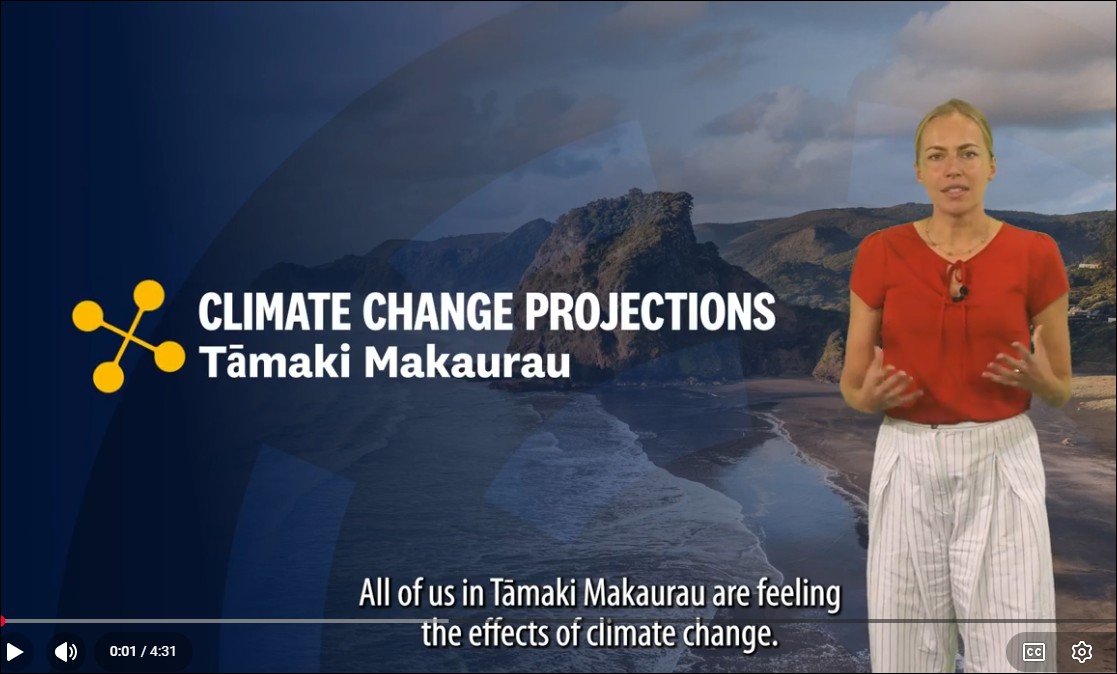Auckland climate change CMIP6 projections for the Auckland region
Author:
Gregor Macara, Ashley Broadbent, Dáithí Stone, Peter B. Gibson, Isaac Campbell, John-Mark Woolley, Erik Behrens, Nicholas Fauchereau, Nava Fedaeff, Earth Sciences New ZealandSource:
Auckland Council Chief Sustainability Office | Earth Sciences New ZealandPublication date:
2025Topics:
EnvironmentExecutive summary
Human-caused greenhouse gas emissions are the dominant cause of recent global climate change. In Auckland, the current average annual temperature is about 1.7°C higher than 100 years ago.
Earth Sciences New Zealand has generated bespoke climate change projections for New Zealand by downscaling and bias-correcting an updated suite of global climate model projections. Auckland Council requested a refreshed climate change and variability report focussing on the Auckland region, utilising these updated climate projections.
This report addresses the projected changes for 24 different variables out to the end of the century (2100). The results of the projections for four scenarios of atmospheric greenhouse gas concentrations (SSP1-2.6, SSP2-4.5, SSP3-7.0, and SSP5-8.5) are included in tables, while a collection of maps illustrate the projections under SSP2-4.5 and SSP3-7.0. SSP2-4.5 is an intermediate concentration scenario that could be a realistic outcome if moderate global action is taken towards reducing greenhouse gas emissions. SSP3-7.0 is a high concentration scenario where little global action is taken towards reducing greenhouse gas emissions.
Key findings of this report (focussing on SSP2-4.5 and SSP3-7.0) include:
- Continued temperature increases are projected for Auckland. Both heatwave frequency and duration are projected to increase, with 16 more days of heatwave by 2050 under SSP2-4.5, and 80 more days of heatwave by 2090 under SSP3-7.0.
- Projected changes to annual and seasonal total rainfall mostly fall within the range of ±10%. There is uncertainty as to whether future increases or decreases in annual and seasonal rainfall will be observed. Spring is an exception, where total rainfall is projected to decrease between 7% (by 2050 under SSP2-4.5) and 17% (by 2090 under SSP3-7.0).
- Heavy rainfalls are projected to become more intense for Auckland. A heavy rainfall (99th percentile) event in summer historically brings 69 mm of daily rainfall. By 2050 under SSP2-4.5, this could increase by 16% to 80 mm. By 2090 under SSP3-7.0, this could increase by 31% to 90 mm. Extreme rainfalls of sub-daily duration were not assessed directly in this report.
- Increased drought frequency, duration, and severity are projected for Auckland. The annual number of days of meteorological drought is projected to increase by 10 days by 2050 under SSP2-4.5, and by 53 days by 2090 under SSP3-7.0.
- Fewer windy days (daily wind speed > 10 m s-1) are projected. Auckland historically records 55 windy days per year. This decreases by between 6 days (by 2050 under SSP2-4.5) and 15 days (by 2090 under SSP3-7.0).
Auckland’s future climate is expected to become increasingly extreme. Combined with ongoing sea-level rise, the region will become increasingly impacted by climate change. However, the extent and severity of future climate changes and associated impacts depends on future greenhouse gas concentrations. Understanding these projected changes can allow Auckland to prepare, find opportunities, adapt, and continue to prosper.
Auckland Council, Earth Sciences New Zealand, July 2025
Auckland Council technical report, TR2025/9
Summary: Auckland's future climate

Watch the supporting video.

